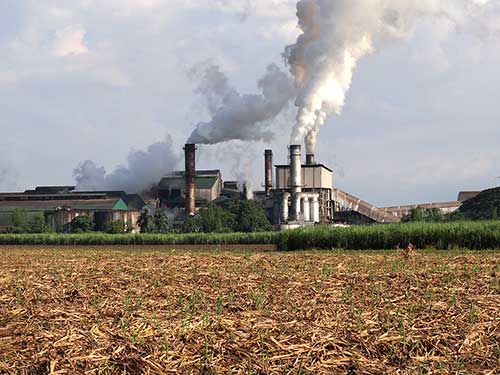
By Rjay Zuriaga Castor
The Philippine Statistics Authority Western Visayas (PSA-6) reported that the separation of Negros Occidental and the highly urbanized city of Bacolod from Western Visayas will likely impact the region’s economic growth.
During a press conference on the May 2024 Western Visayas Inflation, statistical specialists highlighted the significant economic contribution of Negros Occidental to the region.
“Negros Occidental has a higher economic weight and also Iloilo has a big contribution to that of the regional data […] With the separation of Negros Occidental in Region 6, it will definitely have an impact,” said Ma. Goretti Novilla, Officer-in-Charge of the Iloilo Provincial Statistical Office.
Novilla’s remarks followed the signing of the Negros Island Region (NIR) Act, or Republic Act 12000, which establishes the Negros Island Region – unifying the provinces of Negros Occidental, including Bacolod City, Negros Oriental, and Siquijor.
In 2022, Western Visayas recorded the highest economic growth rate among all regions at 9.3 percent, surpassing the national average of 7.2 percent.
The region’s economy was valued at P955 billion, according to the PSA.
Negros Occidental accounted for the largest share of the regional economy with 25.8 percent, followed by Iloilo Province at 21.6 percent, Iloilo City at 15.2 percent, and Bacolod City at 13.9 percent.
In the agriculture, forestry, and fishing sectors, Negros Occidental had the largest share at 32.3 percent or P54 billion, and it also had the largest total industry share for the region at 33.6 percent or P68.9 billion.
Novilla suggested that future inflation reports should include the inflation rates for major commodity groups of each province and highly urbanized cities to understand the impact of Negros Occidental’s removal on the region’s economy.
“It would be beneficial if they also had separate inflation rate reports so we can identify which commodities will likely affect the region’s inflation once excluded,” she said. “We will observe how our report changes and its impact on regional inflation, as it will certainly affect [economic weight].”
Meanwhile, Miguel Gallego, PSA-6 statistical specialist, noted they are still awaiting directives from the central office on the methodology for future inflation reports.
“Even though the law has been signed already, it will still undergo a lot of processes. The central office will also give us instructions on the procedures, whether we will include it or not, and on how Negros Occidental will arrive in their market basket,” he said.
The market basket is a list of commodities or goods and services commonly purchased by households, which includes a variety of goods and services, such as food, drinks, fuel, clothing, toiletries, transportation fare, utilities, and healthcare, among others.
The market basket is a fundamental tool for monitoring and managing economic growth.
Among other uses, it is used to calculate the Consumer Price Index, which measures the average change over time in the prices paid by consumers for a basket of goods and services. This helps in tracking inflation, which is crucial for economic policy and planning.
The market basket also determines or adjusts salaries, wages, pensions, and social security benefits to ensure that consumers maintain their purchasing power despite inflation.





















